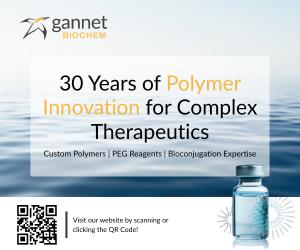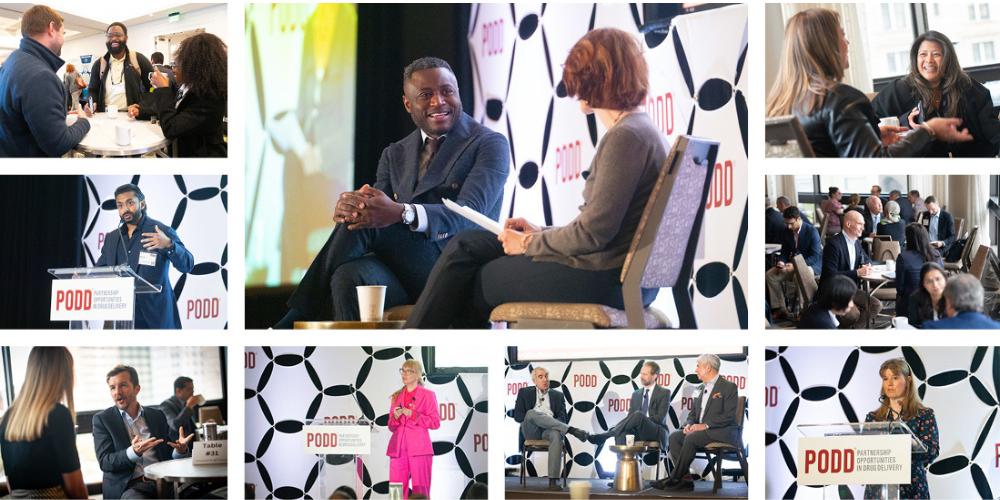Working with Outsourcers to Get Combination Products to Market Faster
Steve Badelt, Rob Schulz and Carolyn Dorgan of Suttons Creek discuss how companies can strategize around the evolving regulatory and competitive landscape of combination products to de-risk development and avoid delays.

What drug delivery trends are you seeing in the market?
Steve: There are three dimensions here. One is the continually evolving regulatory space; the next is a continued move to outsourcing; and the third is the understanding of what it takes to be competitive.
Since the combination product ruling came out, there has been a constant regulatory evolution impacting drug delivery products. Pharmaceutical companies are still struggling with this. We continue to see missteps that either delay programs or lead to CRLs and unsuccessful filings to market. Pharma companies are actively looking for ways to de-risk programs.
Outsourcing is a response to that. Pharma companies are looking for more reliable execution pathways. Partners who bring internal knowledge of combination devices can work with CMC teams to efficiently manage activities that are compliant and ready for regulatory approval.
As this is going on, speed-to-market is becoming the top concern for many products. For competitive advantage, many more companies are focusing on being first to market as opposed to working on particularly novel devices. When you get to market first, you define that space, get critical therapies to patients in need and gain a first-to-market advantage. Delays to market can crush a product, and also a company. If you’re going to market where there is already a combination device product, then there is an increased consideration for whether you really need to prove that your device product is significantly better than what is already out there. In that case, you need to provide a solution that is.
How can regulatory strategies be de-risked?
Carolyn: One of the biggest issues, both US and internationally, is the quickly evolving landscape when it comes to regulatory expectations. While there have been increased efforts in developing guidance and revising applicable standards to be more inclusive of combination products, they are not highly prescriptive because companies are developing a wide portfolio of innovative technologies that challenge a one-size-fits-all approach. You need to leverage the most applicable pieces from each of the different guidance documents, standards and best practices to create an approach that will work for your product. Drug development traditionally has followed well-established regulations and specific formulas. When it comes to combination products, the lack of an established formula creates a guessing game, which makes it important to work with external teams who see what’s working and what isn’t across the ecosystem to apply it to the specific technology a pharma company is developing.
Additionally, it is important to remember that just as companies are learning, so are to the regulators. This means that companies must invest in working interactively and educate reviewers with the rationales behind development decisions rather than just providing a data package. The storytelling aspect of a regulatory submission can really make or break a potential approval. More collaboration between developers and regulators makes a real difference in the success or failure of a submission.
“Drug development traditionally has followed well-established regulations and specific formulas. When it comes to combination products, the lack of an established formula creates a guessing game.”
How can companies get to market faster to deliver these drugs for patients?
Rob: It’s about getting the right strategy set early. You need to engage people with past experience and who can bring teams from different functions together. There are many different workstreams that come together to release the final product. If you create the optimal strategy early on by defining what you want to go to market with and understand the user population you’re designing for and then regularly engage experienced people, you increase your probability of success.
Once you get into execution, you need leaders who can bridge between the different organizations involved, like the drug team, device team, human factors, regulatory, suppliers, vendors, etc. If you don’t have the teams moving in lockstep, or if the teams don’t appreciate the implications of the decisions they’re making, you will struggle. Over and over again, we see companies who do not make these decisions and develop these strategies early enough.
You want to engage these experts and leaders while you’re still making dosing and formulation decisions. If you get past that, and you're already making device selection decisions without having determined the appropriate user population or what your patient looks like or the market demand, you’re already behind the curve. You will probably end up needing to remediate as issues arise, which will slow your time to market and may potentially lead to a CRL.
The advice of strategizing early comes up a lot in the combination development space. Why isn't the industry doing better?
Rob: Companies don’t know what they don’t know. They may have related experience in pharma or medical devices, and they assume that’s enough to move forward in the combination space. The reality is that combination product development is challenging in its own way. Without specific knowledge, you will make mistakes.
Doing better often means outsourcing, primarily because the talent with combination product knowledge is limited. There aren’t many people with this kind of experience who have been through the drug delivery device development process multiple times. If you aren’t engaging with those experts, either internally or through a consulting firm, you’re immediately starting the project off on the wrong foot. Trying to rapidly source an in-house team like this is virtually impossible.
“The most critical element is for companies to avoid doing things wrong the first time. If you want to get to market as quickly as possible, you’ve got to avoid the missteps along the way.”
Are there any proven ways that companies can gain a competitive advantage when it comes to the combination drug delivery space?
Steve: The most critical element is for companies to avoid doing things wrong the first time. If you want to get to market as quickly as possible, you’ve got to avoid the missteps along the way. As early as possible, you need to consider the device – for example, a prefilled syringe or autoinjector system – and its implications for the formulation development, compliance, project timelines, and market acceptance strategy.
Once you’ve got that initial planning done early, you can build time points into your development process where you will consider next steps and make decisions before progressing. That’s when execution comes into play. We’ve seen numerous cases where an experienced CMC program manager doesn’t understand the implications of combination product development. That leads to suboptimal decisions, compliance issues and a slower approach to market. By aligning teams early, you create interfaces that lead to a successful product launch.
What should drug developers be looking for in an outsourcing consultant for combination product development?
Carolyn: The key is to have someone who can serve as a bridge who is both technically competent and able to work with both drug and device teams to bring people together towards a central goal. When you’re talking about your contract manufacturing organization or contract research organization, you want somebody with flexibility and a learning mindset because there will inevitably be swerves and road bumps and you will need to pivot. You want a team that will not blame each other but will come together to find solutions to move forward. You aren’t just hiring a CRO or CMO. You’re creating a partnership. You want someone you can work together with to create something new and better.
Also, just because you've developed a device doesn't mean you can develop a combination product. Just because you've developed a drug doesn't mean you can develop a combination product. Just because you did a combination product 20 years ago doesn’t mean it's the same process today. You really want to look for people who are living and breathing in the space, because the regulations in the industry are changing so quickly.
With regard to outsourcing, are there specific trends that you're seeing in the market?
Steve: More and more clients are interested in outsourcing entire programs or the entire device organization. Smaller companies are coming to us with a novel drug that needs a device to get to market. They need us to run the whole program, from Quality to Regulatory, Engineering, Human Factors etc. We help them make strategic moves as a corporation in terms of when they do or don't move forward to device programs and what the best pathway to market will be.
Big pharmaceutical companies often engage us on process updates and want us to help set up the organization’s development process, including an improved ability to outsource. For many, they have a device team already, but their team can only support so many simultaneous programs. They require support for the quick scale up of programs beyond their capacity. Those companies are increasingly outsourcing program execution and leadership for a few combination product programs, while leveraging their internal execution teams for the programs they have the capacity to cover.
The OEMs and CMOs are referring in more outside support for their pharma clients as they realize how that impacts their bottom line as well. When a drug is delayed, everybody in the value chain, from the pharma company to the OEM or CMO, is impacted. So CMOs and OEMs are referring in experts to support drug and device together to minimize delays and de-risk programs for their pharma partners. It creates increases in return on investment, even for these suppliers, to bring in expert services rather than suffer from internal challenges and market delays.
“This isn’t an area where any one person can figure it out. It’s about putting the right group together and working through the typical challenges that arise during product development.”
Is there a right time to engage with outsourced drug delivery experts?
Rob: The right time is dependent upon where you are in your development cycle. For a company going into clinical stage, you want your commercial device to be used and have actual clinical experience. The FDA has the desire that whatever device you decide to go to market with is going to be used in your clinical program. To have that device ready for phase three pivotal, you have to start developing during phase two. Phase two is where your formulation and dosing is determined and having this in hand is critical to mitigate and confirm design decisions on the device side.
That’s when you can finalize your device selection and design criteria. But really you should be engaging earlier that phase two to answer questions like: What is the right type of device? How can we get this to market in a fiscally responsible way? Can we commercialize with a lower risk device and do a fast market submission afterwards with a more complex device? What novel approaches will we need to take for larger molecules like cell and gene therapies? There’s a real opportunity to engage before the device development process to have these discussions rather than waiting until the last possible moment and trying to push everything through.
We sound like a broken record but the earlier you engage with a firm that can advise on tradeoffs, the better.
Anything else?
Steve: Drug developers should feel comfortable reaching out even if it is just to ask basic questions. We’d prefer they solve these problems earlier and be set up for success rather than incurring delays and additional costs to fix things later. It isn’t rare for us to be in a position where a company could have avoided a major issue if they had come with a question three months earlier.
Rob: Details matter. You want to ask the people who understand those details, who have advised on those details, and who have seen dozens of products through design and execution. It isn’t just about putting out a file or doing the right testing. The people we work with are ridiculously smart. But this isn’t an area where any one person can figure it out. It’s about putting the right group together and working through the typical challenges that arise during product development.
Carolyn: Partnerships are critical. Establishing the right relationships, whether it’s with consultants, CMOs or even amongst different internal teams – the right team who is open to learning, problem solving, and coming up with creative solutions can make a huge difference in the success of a combination product development program.
In this article











